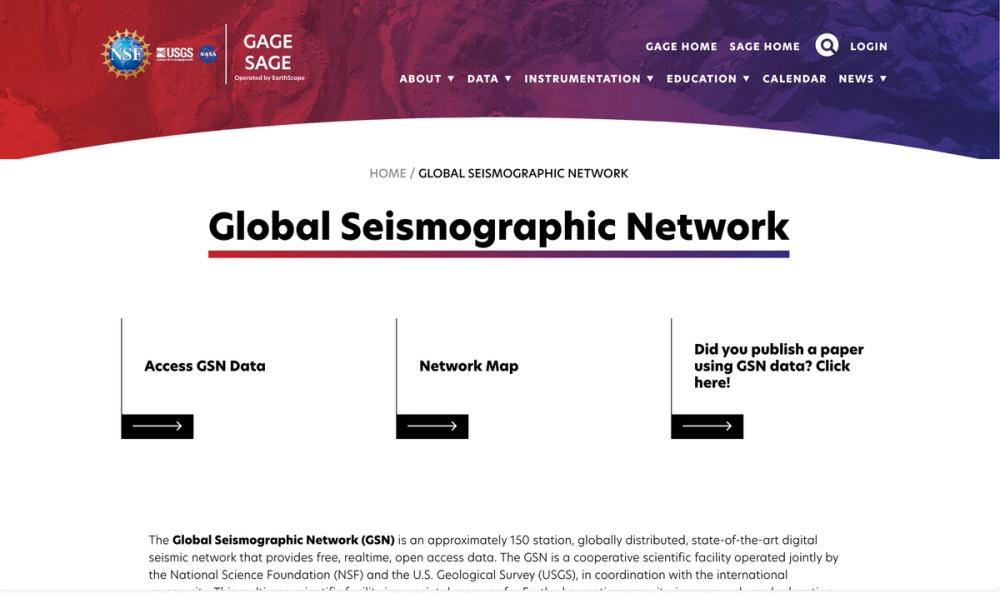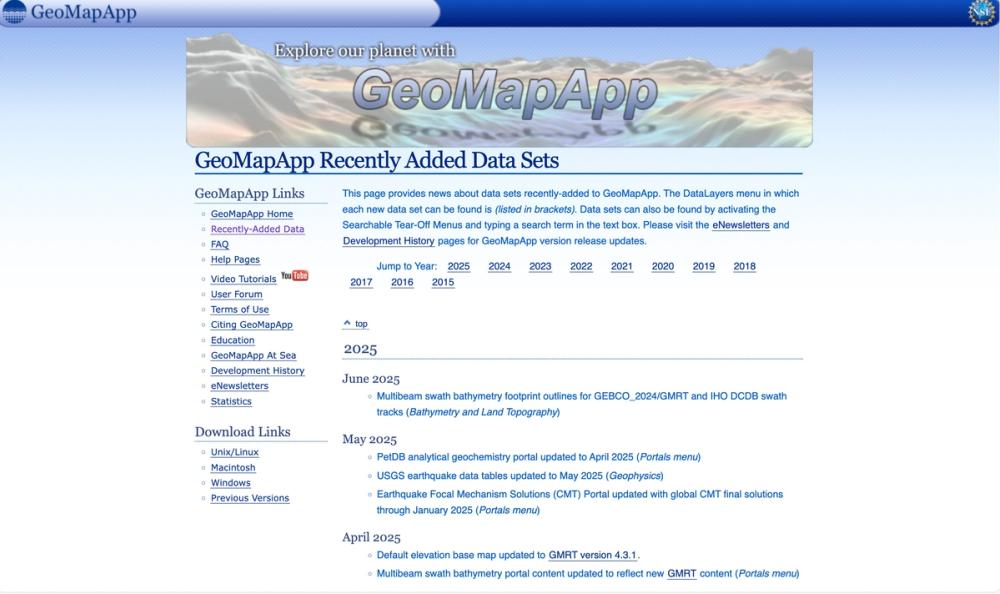Global Seismographic Network (GSN)
The Global Seismographic Network (GSN) is a state-of-the-art digital seismic network comprising approximately 150 stations worldwide, delivering free, real-time, open access data for geophysical research and monitoring. Operated collaboratively by the National Science Foundation (NSF) and the U.S. Geological Survey (USGS), with oversight from the EarthScope Consortium, the GSN supports a wide range of scientific and societal applications. Key features include high-fidelity recording of seismic vibrations—from high-frequency strong ground motions to slow global Earth oscillations—and multi-use infrastructure with additional sensors like GPS and microbarographs at select stations.
Geophysical Applications
The GSN is a critical resource for seismology, providing essential data for earthquake location, hazard mitigation, and emergency response in collaboration with entities like the USGS National Earthquake Information Center (NEIC) and NOAA Tsunami Warning Centers. It also supports tsunami warning systems globally and contributes to nuclear test monitoring via the Comprehensive Nuclear-Test-Ban Treaty Organization (CTBTO). Beyond seismology, GSN data aids in studying Earth's structure, geodynamics, and environmental phenomena like ocean wave energy and volcanic eruptions.
Target Users
This network serves a diverse user base, including:
- Researchers in seismology and geophysics, who use GSN data for academic studies on Earth's interior and seismic events.
- Engineers involved in earthquake engineering and infrastructure resilience, leveraging data for hazard assessment.
- Government Agencies and emergency responders, relying on real-time data for disaster management and public safety.
- Students and educators, who access GSN resources for learning about geophysical processes and data analysis.
Typical Use Cases
- Earthquake Monitoring and Research: Real-time data collection for locating earthquakes and understanding fault mechanics.
- Tsunami Warning Systems: Providing rapid seismic data to predict and mitigate tsunami impacts.
- Global Earth Studies: Analyzing long-period seismic waves to model Earth's deep structure and dynamics.
- Educational Outreach: Offering datasets for teaching geophysical concepts and data processing techniques.
The GSN's open access policy and global coverage make it an indispensable tool for advancing geophysical science, enhancing public safety, and fostering international collaboration through the International Federation of Digital Seismograph Networks (FDSN).




